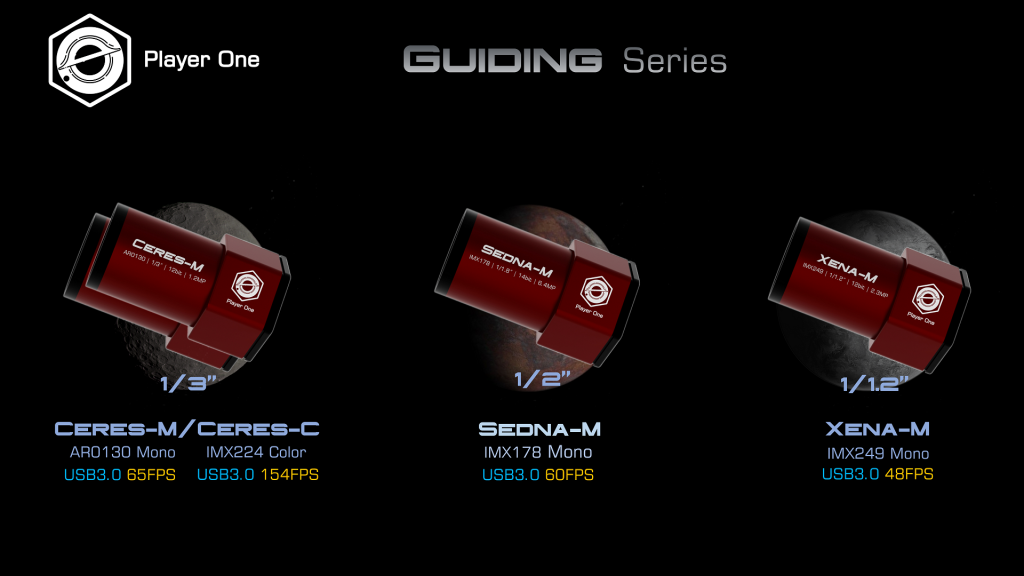
Player One guiding camera series including 4 models. Outlook of guiding camera is much smaller and lighter. As we know, our planetary camera named with planets in solar system. So our guiding camera will use dwarf planet for naming.
USB3.0 era
Did you still use USB2.0 camera for guiding and imaging? Do you feel it is too slow? From now, Player One will use USB3.0 transmission technology in guiding cameras. Faster enough for both guiding and imaging.

Sensor format
FOV is very important in guiding, especially looking for a guide star with an OAG, this series include 1/3″, 1/2″ and 1/1.2″ format. Different format can help users to handle every situation.
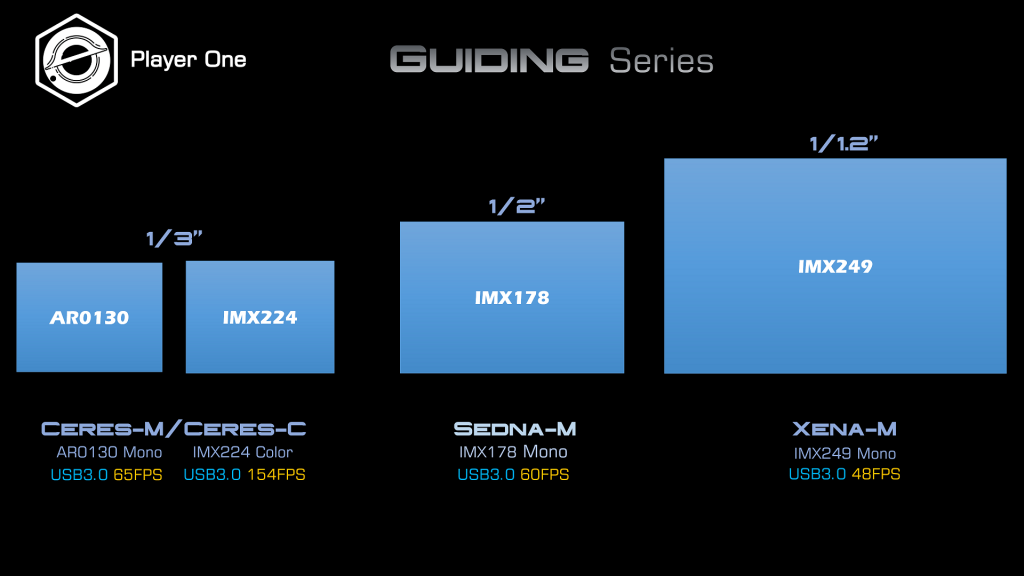
How to choose?
Ceres-M/Ceres-C : 179USD ( Ceres camera is best for guiding scope. Also suitable for beginner who wants to do some imaging. )
Sedna-M : 309USD ( Sedna camera is best for OAG guiding with median focal length, such as Newtonians and big refractors.)
Xena-M : 469USD ( Xena camera is best for OAG guiding with long focal telescope, such as RC system.)
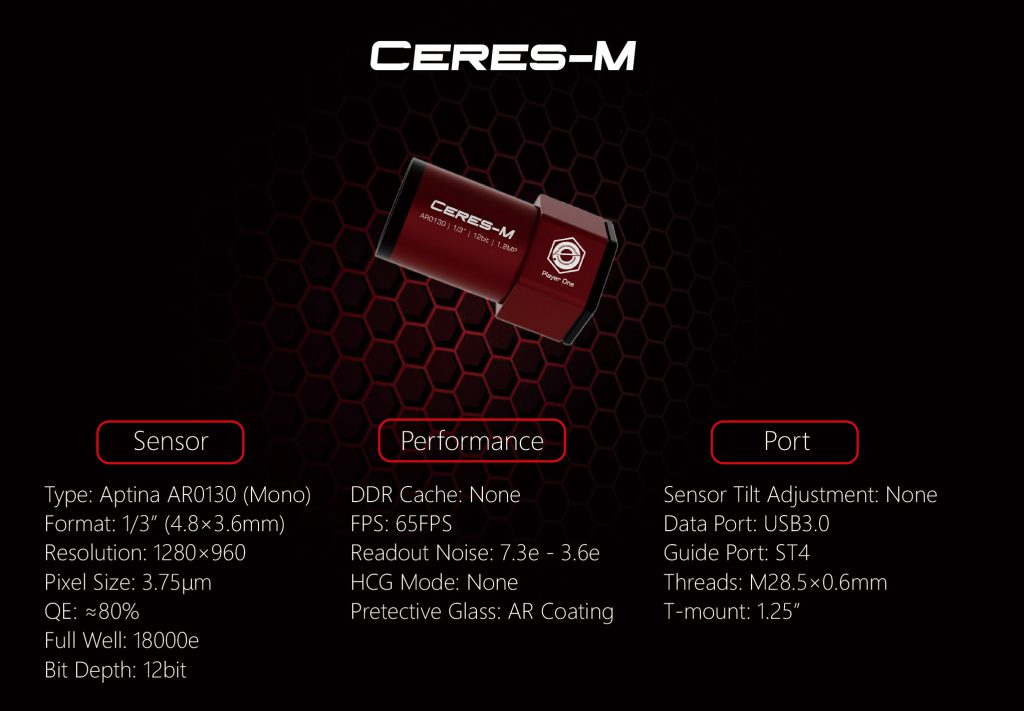
Ceres-M USB3.0 Mono Camera (AR0130)
Ceres-M monochrome camera, which adopts the Aptina AR0130 1/3” format sensor. The 3.75um pixel size accommodates a well depth of 18ke with a total of 1.2MP (the resolution is 1280*960), and the diagonal is 6mm.
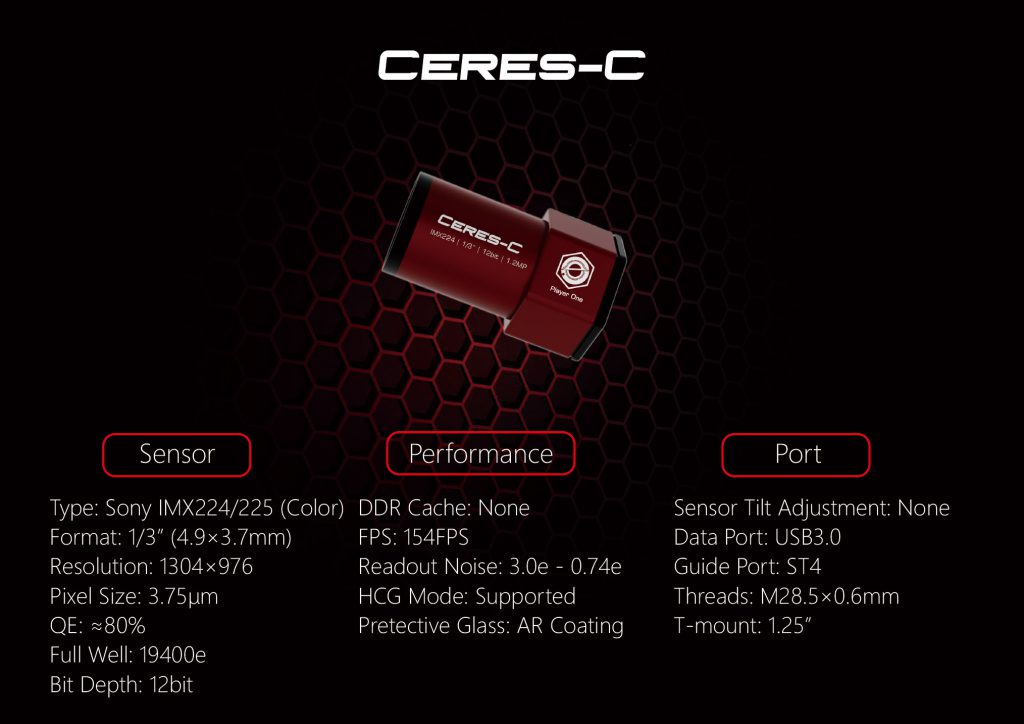
Ceres-C USB3.0 Color Camera (IMX224)
Ceres-C color camera, which adopts the Sony IMX224/225 1/3” format sensor. The 3.75um pixel size accommodates a well depth of 19.4ke with a total of 1.2MP (the resolution is 1304*976), and the diagonal is 6mm.
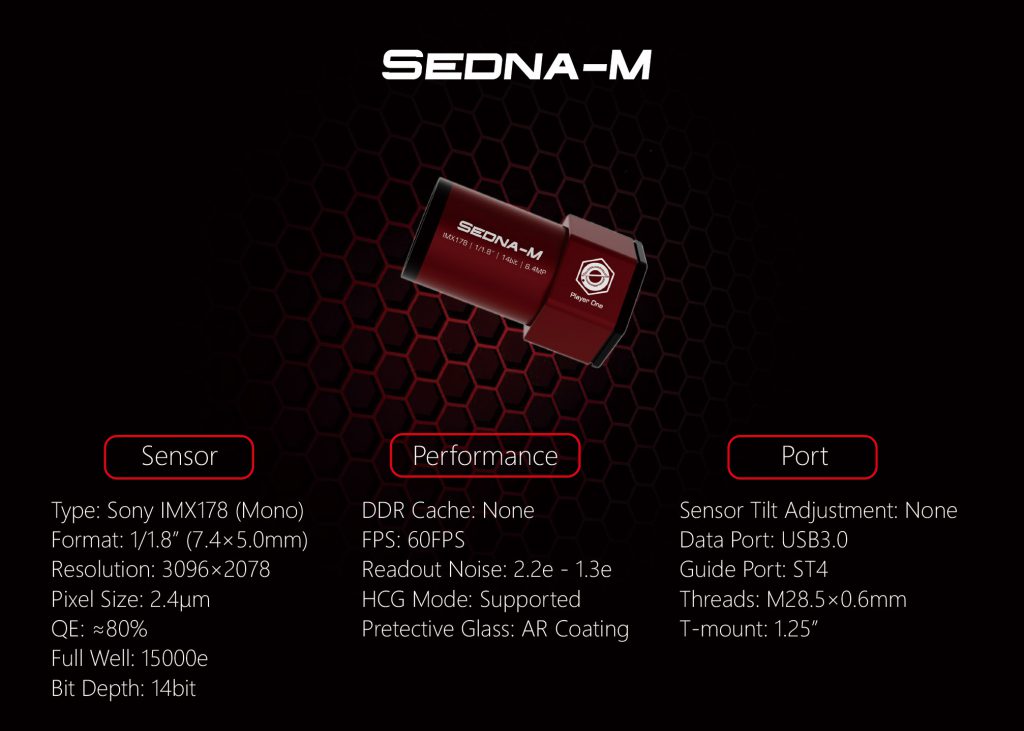
Sedna-M USB3.0 Mono Camera (IMX178)
Sedna-M monochrome camera, which adopts the Sony IMX178 1/1.8” format sensor. The 2.4um pixel size accommodates a well depth of 15ke with a total of 6.4MP (the resolution is 3096*2078), and the diagonal is 9mm.
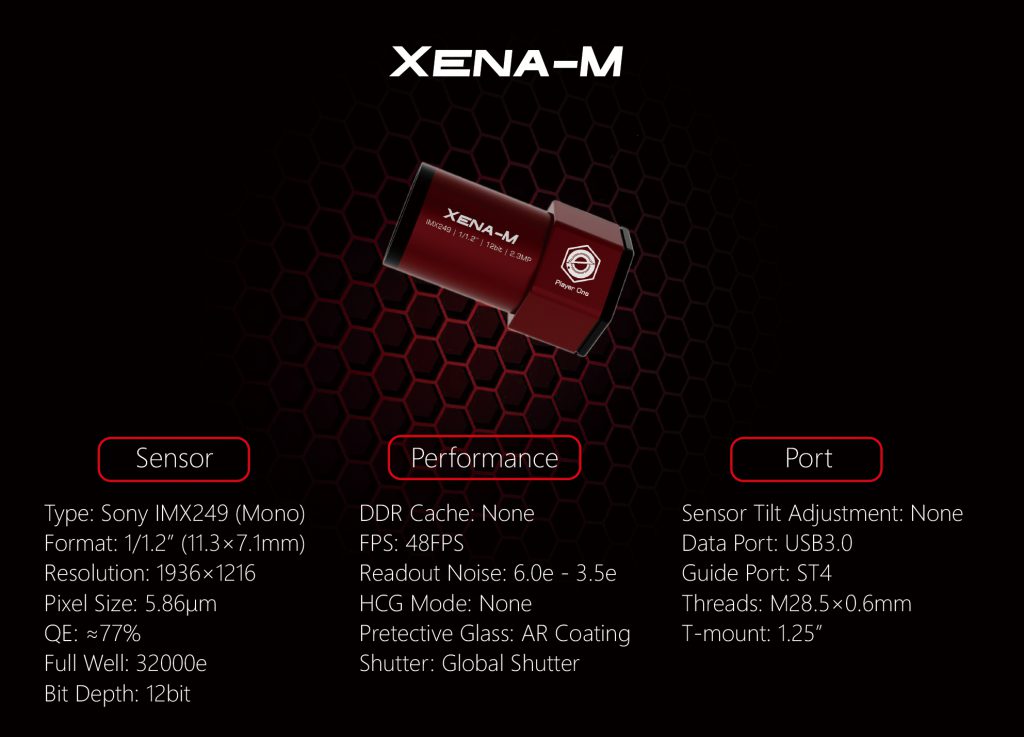
Xena-M USB3.0 Mono Camera (IMX249)
Xena-M monochrome camera, which adopts the Sony IMX249 1/1.2” format sensor. The 5.86um pixel size accommodates a well depth of 32ke with a total of 2.3MP (the resolution is 1936*1216), and the diagonal is 13.3mm.
-白底-small100-200x78.jpg)